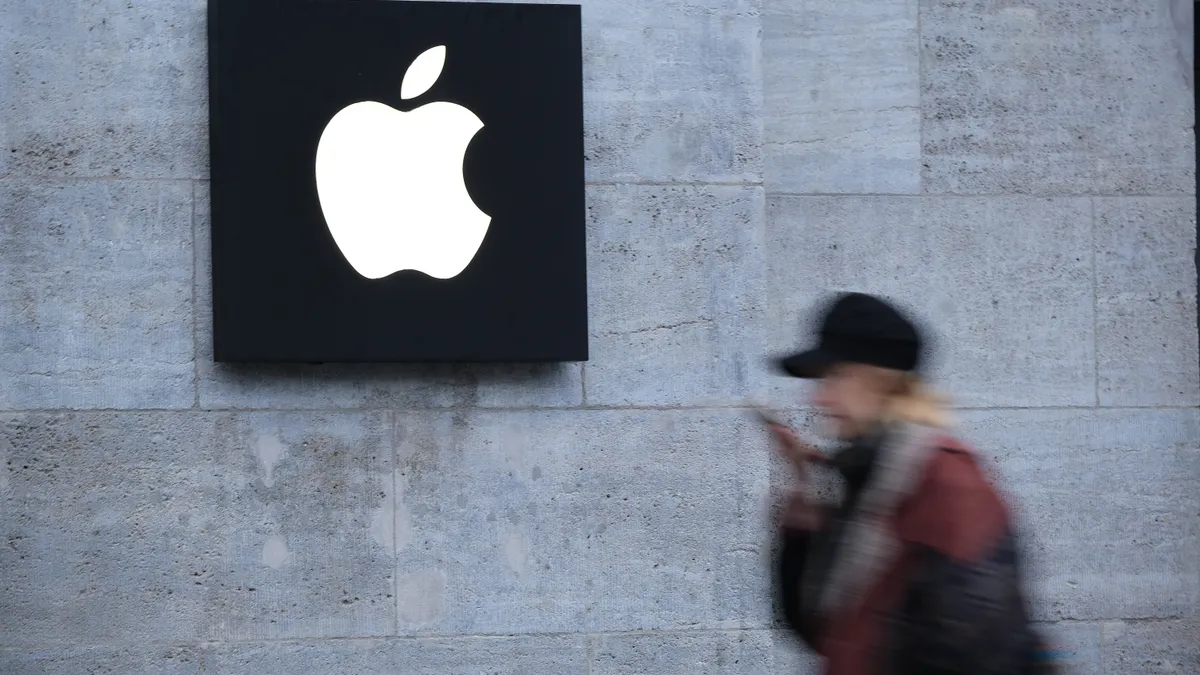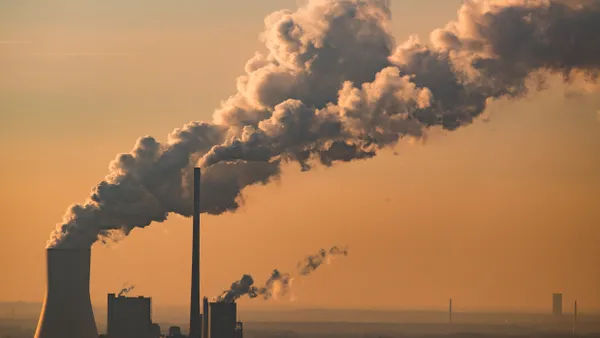Dive Brief:
- Tech giant Apple said last week it has reduced its scope 1, 2 and 3 carbon emissions by 55% across operations since 2015, excluding carbon offsets, in its 2023 Environmental Report.
- The iPhone maker said those emissions reductions have been driven by an increased use of renewable energy in its supply chain, sourcing recycled content and reducing emissions in multiple product rollouts last year.
- The company has a goal to be carbon neutral by 2030, which it said will require cutting emissions across its value chain by 75% by decade’s end, compared to 2015 levels, according to a Thursday press release. Apple will rely on “high-quality carbon removal solutions for the remaining emissions,” per the the report.
Dive Insight:
Apple said its focus is on decarbonizing its supply chain’s three largest sources of emission — materials, electricity and transportation — and is prioritizing initiatives that will have the broadest impact before adding in carbon offsets. The company reported it abated more than 2.7 million annualized metric tons of carbon dioxide equivalent from supply chain emissions reductions efforts in 2023 and reduced emissions from product transport by 20% compared to 2022.
Apple’s scope 3 emissions accounted for nearly all of the company’s emission’s profile, including product manufacturing (59%), product use (29%), product transport (9%), business operations (3%) and products’ end-of-life process (less than 1%). The company’s scope 1 and 2 emissions each accounted for less than a percent of the company’s total emissions.
The California-based tech company noted that while its emissions have been slashed by more than half since 2015, revenues grew by 64% in the same time span. Lisa Jackson, Apple’s vice president of environment, policy, and social initiatives, said in the release that this is “proof of Apple’s commitment to climate action,” before adding that “more hard work is ahead.”
“We’ve crossed key milestones on our environmental journey,” Jackson said in the report. “We owe it to our global community to rise to the challenge of climate change with all the innovation, empathy and commitment we can muster.”
Apple said the past year has also seen membership grow in the number of its suppliers committed to using 100% renewable energy for Apple products by 2030 and membership in its clean water program, according to the report. The supply chain clean energy program had more than 320 commitments as of March — up from the 300 it reported in Q4 of 2023 — which Apple said represents 95% of its direct spend for materials, manufacturing and assembly globally.
On April 17, a day prior to the Environmental report’s release, the company announced it would increase global investments in clean energy and clean water. Apple, which now has more than 18 gigawatts of clean energy capacity across its operations and supply chain, said it will match every watt of electricity used by customers for charging its products with clean energy by 2030. The company said it will achieve this through large-scale global investments in renewable energy to address the greenhouse gas emissions associated with the use of the company’s devices.
Apple said it is part of a strategy to minimize emissions from product use by working to improve efficiency, work to decarbonize the grid and investing in clean energy projects that “maximize carbon reductions and social impact.” The company has invested in a portfolio of solar projects in Michigan that will have 132 megawatts of capacity when construction is completed later this year.
On the clean water front, Apple — which has an end-of-decade goal to replenish all of the freshwater used in corporate operations “in high-stress locations” — announced projects in Northern California and Phoenix, Arizona, that are collectively expected to result in 7 billion gallons in “water benefits,” according to the release.
The company’s 2023 environmental report also included a new goal to expand and grow its supplier clean water program, which it said has 242 participating facilities with an average 42% reuse rate. Apple said it will prioritize “high water stress locations” to increase its average water reuse rate to 50% by 2030.
“Clean energy and water are foundational to healthy communities and essential building blocks for a responsible business,” Jackson said in the April 17 release.
The company also released its first “carbon-neutral” product line last year, during its Apple Watch rollout, which the company said attributed in part to the emissions reductions, according to the report. The Beijing-based Institute of Public & Environmental Affairs later questioned the validity of those claims.
Apple is also a founding member of the Clean Energy Procurement Academy — along with Nike, Amazon, Meta, PepsiCo and REI Co-op — launched last year. The initiative aims to provide supply chain partners with the technical expertise transition to clean energy.












